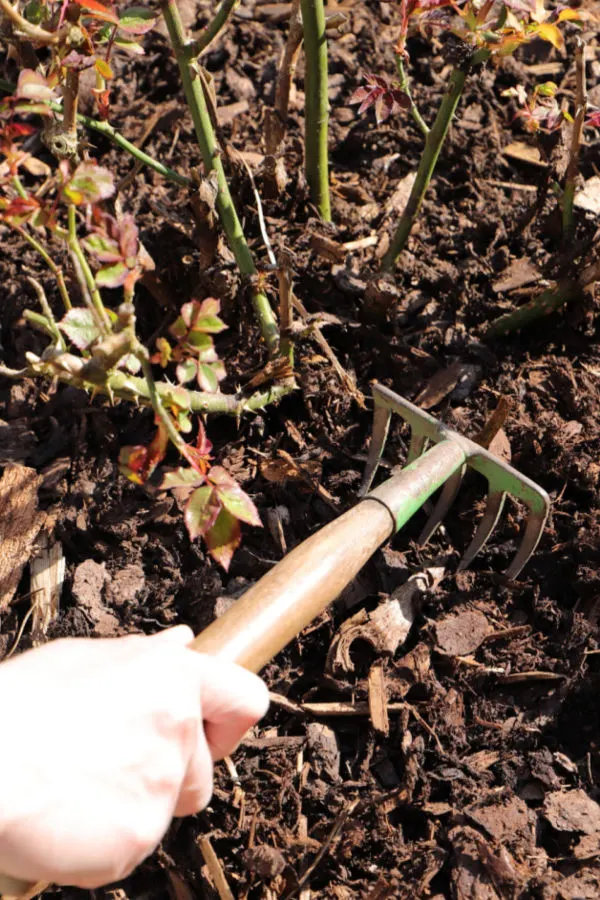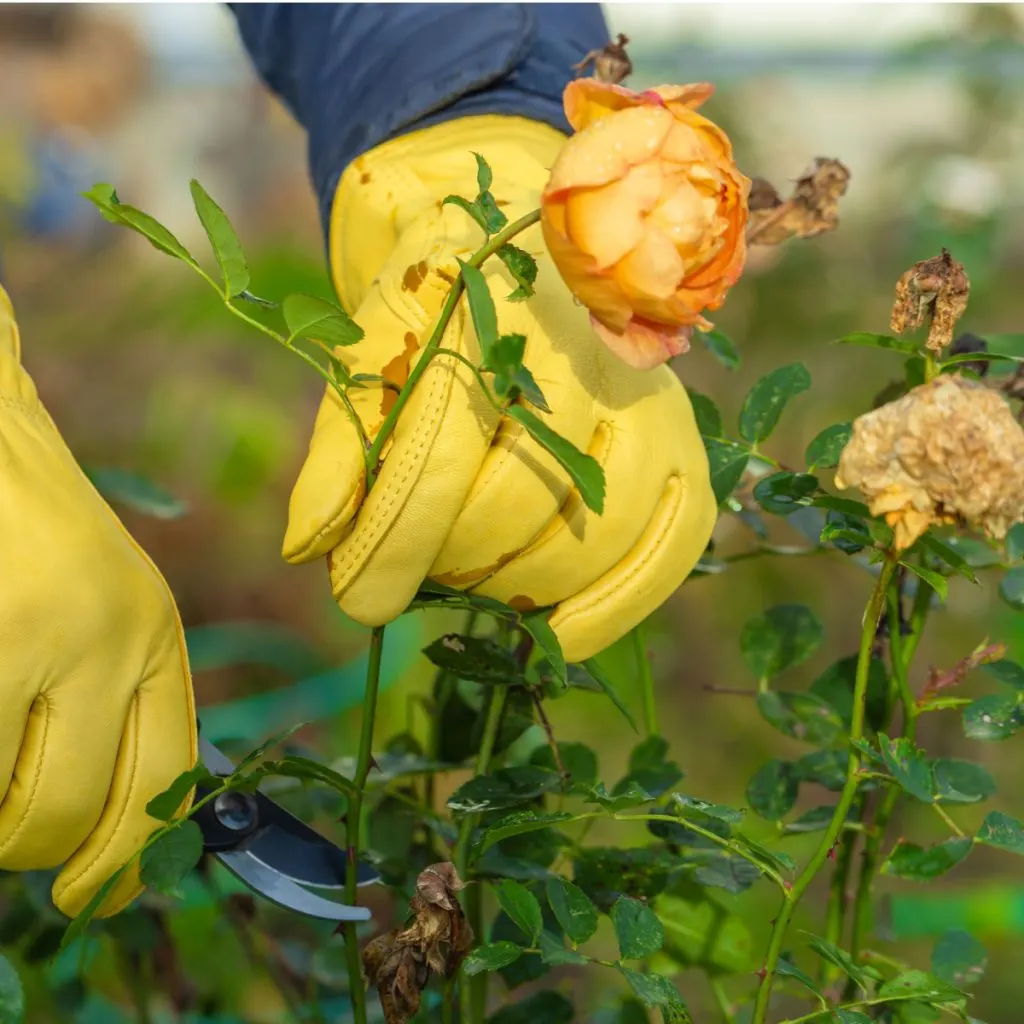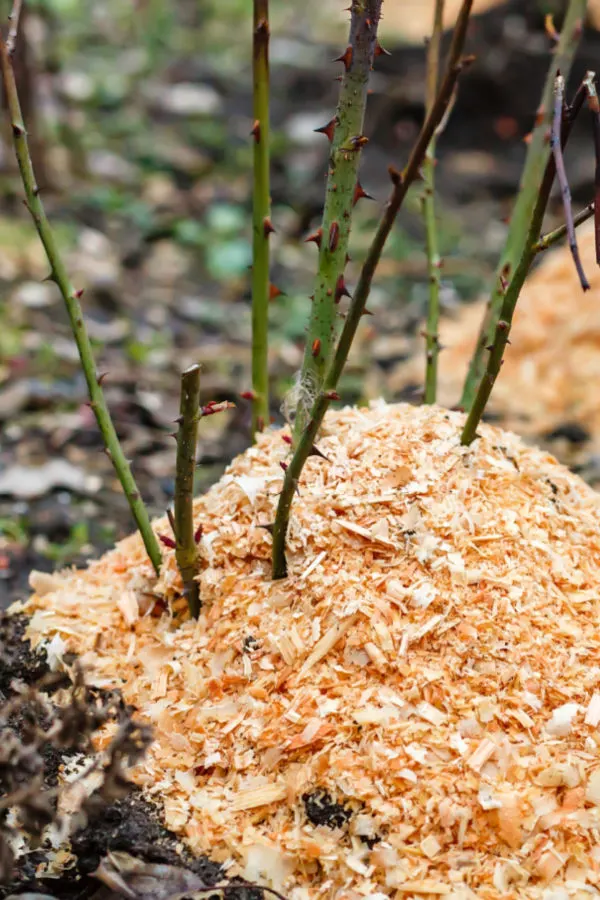Wondering what you need to do for your rose bushes this fall before winter arrives?
Fall is a critical time for roses and rose care. One thing is for sure, it can play a huge role in not only how well your roses survive winter – but also in just how well they bloom and perform next spring and summer.
If left to fend for themselves through winter without any fall preparation or protection, most rose bush varieties will have a high probability of sustaining some type of winter damage. And if the winter is bad enough, even risk completely freezing out.
With that said, as you will see below, you can also put your roses at risk of damage by providing too much care. In fact, quite often, excessive fall care leads to even more damage than when providing little to no care at all!
With giving your rose bushes the care they need in the fall in mind, here is a look at what you should be doing before the cold of winter arrives – and what you shouldn’t!
What To Do To Your Rose Bushes In The Fall – And What Not To Do!
When it comes to fall rose care, there are two chores that should never be performed – heavy pruning and fertilizing. Unfortunately, if done in the fall, both can put your bushes at high risk for winter damage.
Why To Avoid Pruning
Whether you grow hybrid roses, climbing roses, or shrub roses, pruning should be kept to the bare minimum in the fall. Excessive pruning is dangerous to roses in the fall – and will leave them vulnerable to all kinds of winter damage.
When you prune a rose during any part of the growing season, the plant will attempt to regrow and fill out. And if you prune in the fall, as long as the weather stays warm enough, the bush will grow tender new foliage.

That new growth is dangerous because it puts the plant at risk of freezing out as winter hits full force. It’s okay to remove a few straggling or damaged branches in the fall, but you should save any major pruning for when the plant is in full dormancy in late winter. See: How To Prune Rose Bushes Before Spring – Get Your Roses Ready To Bloom!
One other note on pruning – if you happen to have a newly planted rose, don’t prune at all the first year. Newly planted rose bushes do not have extensive roots and are the most vulnerable of all. Instead, allow new roses to keep all of their branches and stems to strengthen their resources with another full year of growing.
Why To Avoid Fertilizing – What To Do With Rose Bushes In The Fall
In addition to excessive pruning, fertilizing should always be avoided in the fall as well. This same advice actually applies to nearly all perennial plants growing in your landscape.
Fertilizing plants too late in the growing season can fool plants into a new growth mode. Just as with pruning, the tender late growth is easily susceptible to winter damage as the temperature drops. To be safe, stop all fertilizing in mid-August to avoid potential late season growth.
So what should you be doing for your roses in the fall? The key to success all lies with getting them protected before the cold of winter arrives! As for how to protect them – it will all depend on two main factors – the variety of roses you are growing, and your climate.

How To Prepare & Protect Rose Bushes For Winter – What To Do With Rose Bushes In The Fall
What To Do With Shrub Rose Bushes In The Fall
Shrub roses are the easiest of all to care for and require little preparation for winter. Once a few frosts have put the plant into full dormancy, remove the leaves that have fallen to the ground. These can overwinter insects and disease, and it’s best to get them away from the plant.
Finish by applying a few inches of compost around the base of the shrub. Unless you live in an ultra-cold winter environment, no additional protection is needed.
What To Do With Climbing Rose Bushes In The Fall
Climbing roses need more protection against the wind than anything. Their canes can easily sustain damage from strong winds or heavy ice and snow.
The best way to protect a climbing rose is to remove the canes from the trellis and tie around them with a wire or rope to hold the canes together. Next, lay the canes down on the ground and apply a four to six inch layer of mulch to protect them over winter.

If this is not possible due to the size or location, at least tie the canes together to the structure. This will help support them through winter. In addition, mound a solid 6″ to 8″ layer of sawdust or wood chips around the base.
What To Do With Hybrid & Tea Rose Bushes In The Fall
Hybrid and tea roses, along with climbing roses require a bit more help to make it through winter unscathed. As with the shrub roses, begin by removing any leaves that have fallen and gathered around the bush.
Next, apply a 6″ to 8″ layer of mulch or sawdust around the base of the shrub, being careful to cover any grafts or unions at the base of the plant. These are the most vulnerable of all to winter damage. Do not mound up existing mulch from around the plant for this task.
This can expose roots of the bush and put them at risk through the winter. Instead, use additional mulch or sawdust to cover. If you live in an area with extremely cold winters, plant covers are the way to go to keep your roses safe. Affiliate Product Link: Lesiyou 4 Packs Reusable Plant Covers with Drawstring for Winter Frost Protection
These, in addition to mounding saw dust or mulch over the crown and base can add an extra layer of protection. Always be sure to remove any cover as spring nears to allow the rose bush to grow freely.
Here is to giving your rose bushes the care they need this fall. And even more, to helping them survive winter and thrive next spring and summer! If you would like information on how to get your hydrangeas ready for winter, check out our article: What To Do With Old Hydrangea Blooms In The Fall – To Cut Or Not To Cut?
Happy Gardening, Jim & Mary.
Old World Garden
Jim and Mary Competti have been writing gardening, DIY and recipe articles and books for over 15 years from their 46 acre Ohio farm. The two are frequent speakers on all things gardening and love to travel in their spare time.
As always, feel free to email us at thefarm@owgarden.com with comments, questions, or to simply say hello! You can sign up for our free email list in the subscribe now box in the middle of this article. Follow us on Facebook here : OWG Facebook. This article may contain affiliate links.


